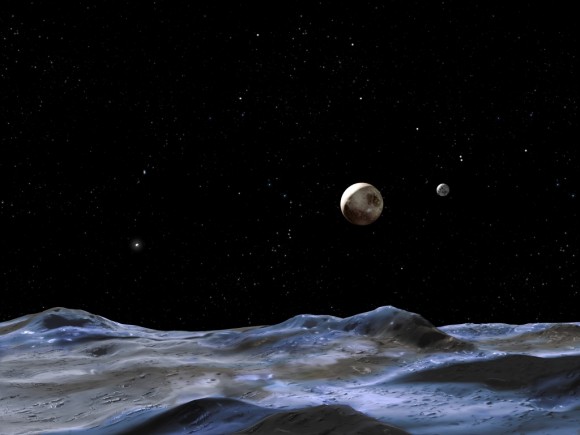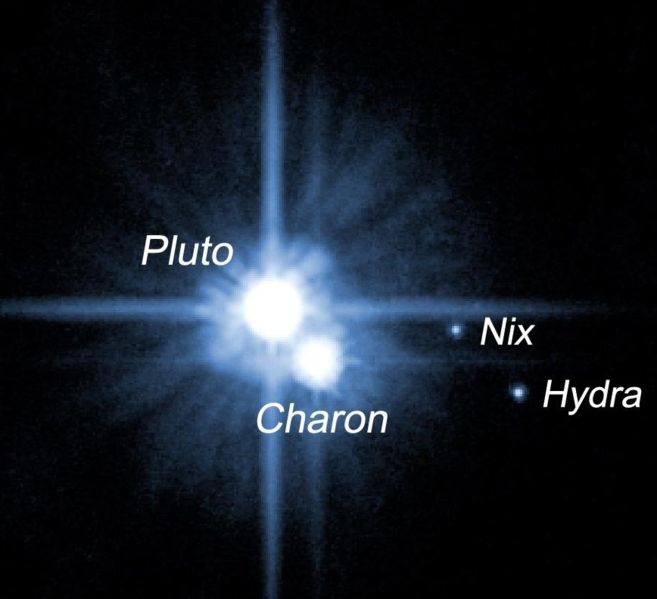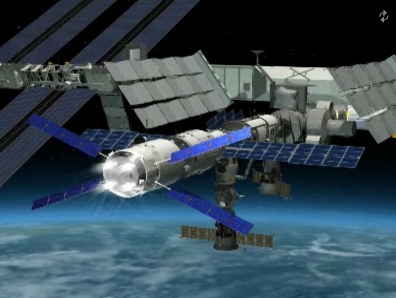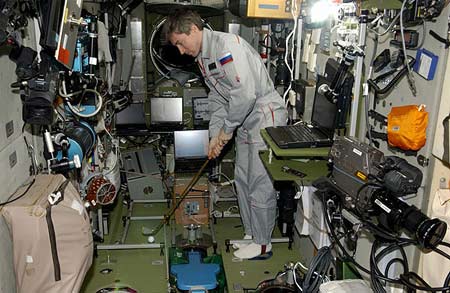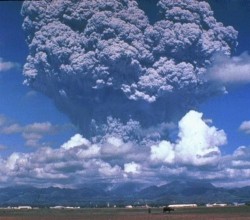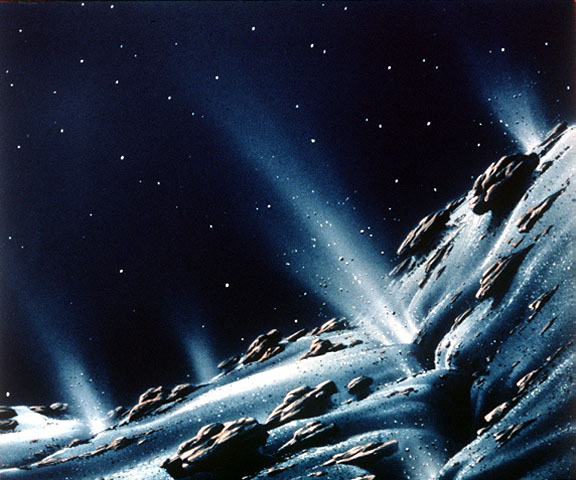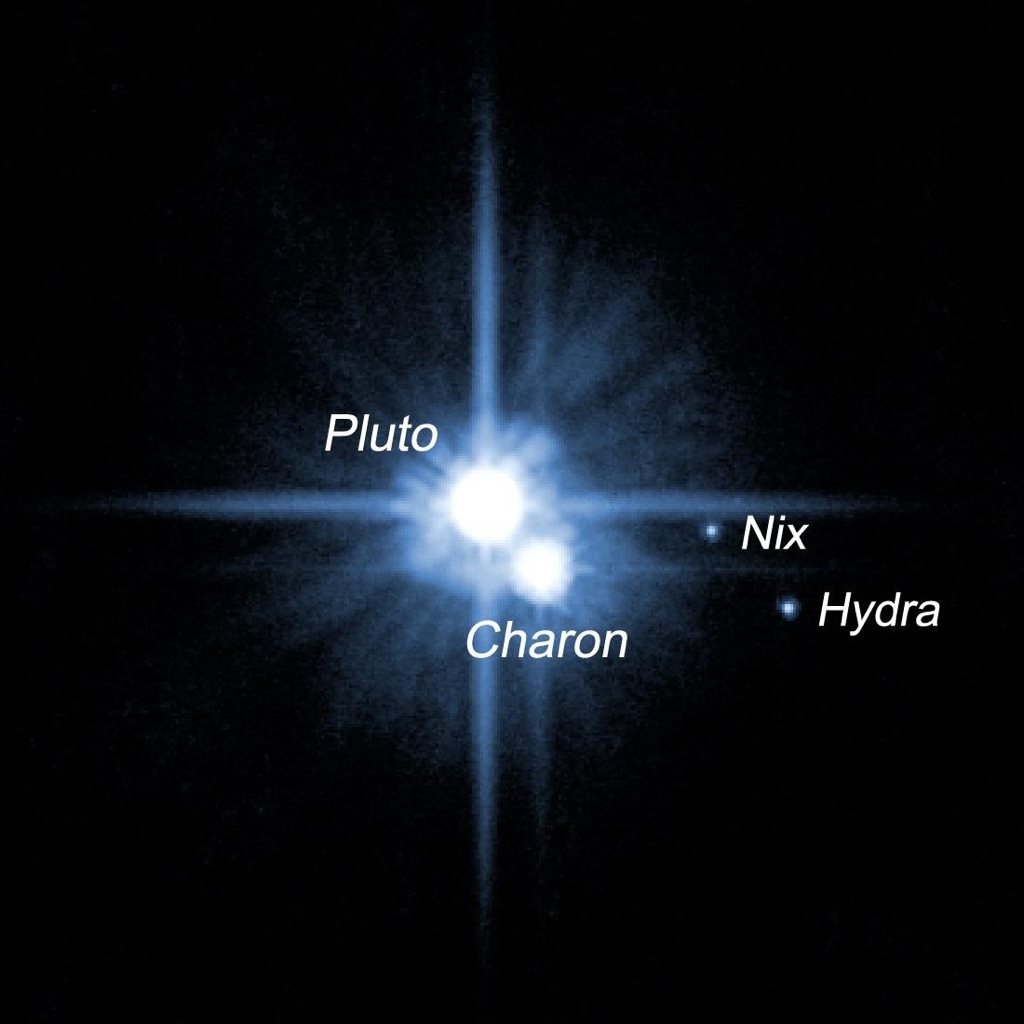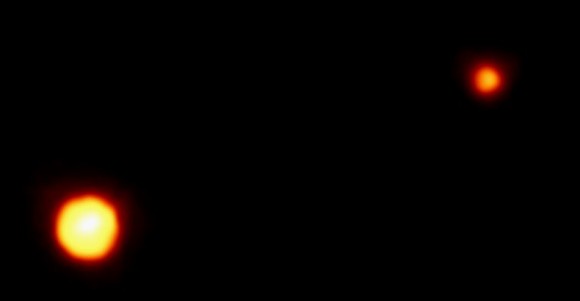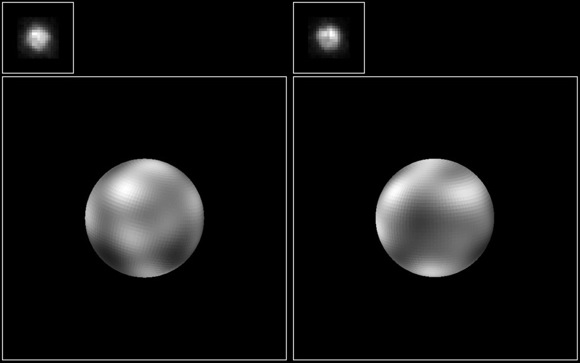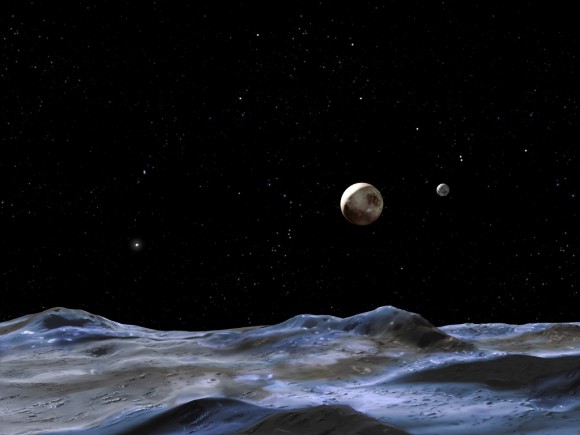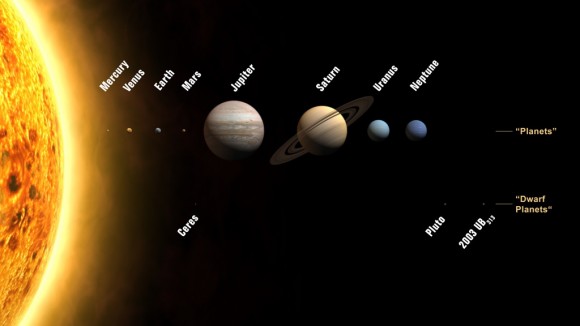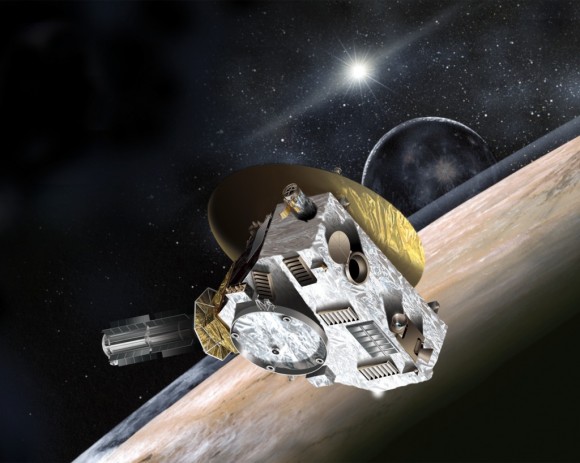[/caption]
With such a large distance from the Sun, Pluto is incredibly cold. But this temperature can vary enough to change the dwarf planet significantly. At its closest point, it warms up enough so that Pluto’s nitrogen atmosphere sublimates and forms a diffuse cloud around it. As Pluto gets further away from the Sun; however its this atmosphere freezes out, and falls to the surface of Pluto like snow.
First, let’s define some measurements. Room temperature is considered 21-degrees Celsius or 70-degrees Fahrenheit. The freezing point of water is 0-degrees Celsius or 32-degrees Fahrenheit. But when you’re measuring temperatures on Pluto, you really want to use Kelvin.
Zero Kelvin is the absolute zero temperature; a theoretical maximum point where no more energy can be extracted from a system. 0-degrees Kelvin corresponds to -273-degrees Celsius.
The surface of Pluto, in comparison, can range from a low temperature of 33 Kelvin (-240 degrees Celsius or -400 degrees Fahrenheit) and 55 Kelvin (-218 degrees Celsius or -360 degrees Fahrenheit). The average surface temperature on Pluto is 44 Kelvin (-229 Celsius or -380 Fahrenheit).
Back in the days when Pluto was still a planet, it was the coldest planet in the Solar System. But now it’s just a regular temperature dwarf plant – poor Pluto. Neptune is now the coldest planet.

